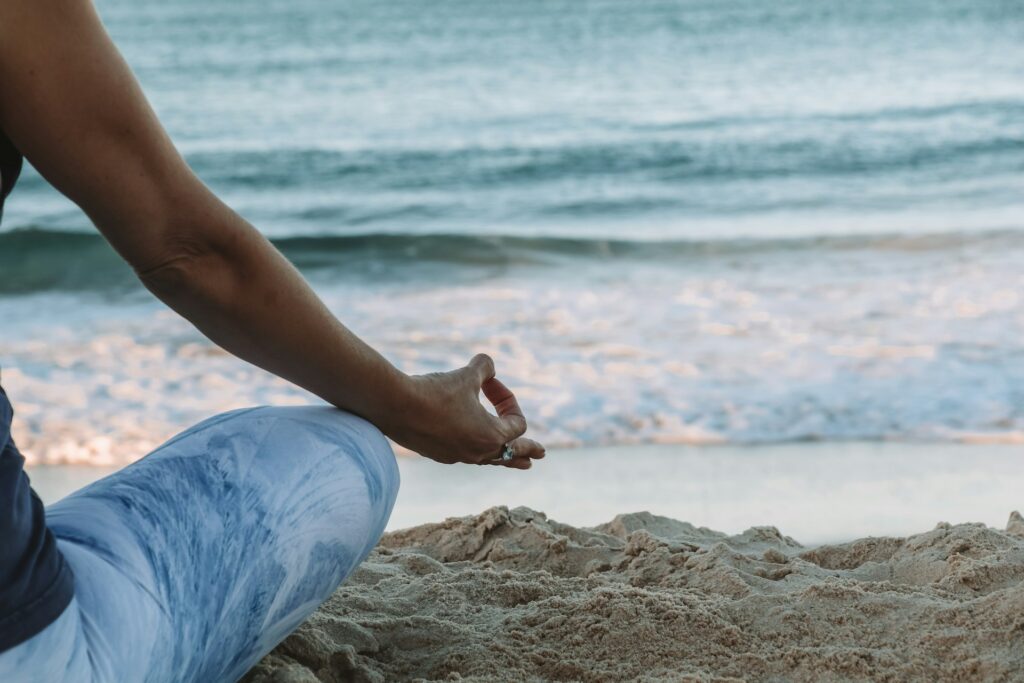And why your most productive moments might come from doing absolutely nothing
Here’s a confession that might sound completely backwards in our hustle-obsessed world: The most transformative addition to my self-care routine wasn’t a $200 jade roller, a meditation app subscription, or even that fancy adaptogenic latte everyone’s raving about. It was something I used to desperately avoid—boredom.
I know, I know. You’re probably thinking, “Boredom? Really? That’s the opposite of self-care!” But hear me out, because this counterintuitive approach has become the secret sauce that’s revolutionized not just my creativity, but my entire relationship with rest, productivity, and yes—even happiness.
The Day I Stopped Running From Empty Moments
It started on a particularly overwhelming Tuesday. You know the kind—back-to-back Zoom calls, a notification-heavy phone that wouldn’t quit buzzing, and that familiar feeling of being perpetually “on” but somehow accomplishing nothing meaningful. I was sitting in my car after yet another meeting, about to reflexively grab my phone to fill the three-minute gap before my next commitment, when something made me pause.
What if I just… didn’t?
What if I sat there, in my car, with nothing to distract me from my own thoughts?
The first thirty seconds felt excruciating. My brain was practically screaming for stimulation. But somewhere around the two-minute mark, something interesting happened. My mind started to wander, and suddenly I had the solution to a work problem that had been nagging me for weeks. Not because I was actively trying to solve it, but because I finally gave my brain the space to make connections.
That moment was my introduction to what researchers call the “default mode network”—the brain state that kicks in when we’re not actively focused on a task. Studies show that when the mind wanders, it engages the brain’s “default mode network,” a key player in problem-solving and self-reflection. It turns out that our brains are actually working pretty hard when we think we’re doing “nothing.”
The Science of Strategic Spacing Out
Here’s what I wish someone had told me years ago: Boredom has been scientifically proven to be a precursor for creative thinking. When we’re bored, our brains are relaxed and our usual “filters” are off. This isn’t just feel-good pseudoscience—there’s real research backing up what I experienced in that car.
Studies have found that people who engage in boring tasks before creative challenges consistently outperform those who jump straight into problem-solving mode. “Coming up with a boring task (especially a reading task),” the authors conclude, “might help with coming up with a more creative outcome.” The reason? Boredom activates what researchers call “lateral thinking”—our brain’s way of making unexpected connections between seemingly unrelated ideas.
But the benefits go beyond just creativity. When I started intentionally incorporating boredom into my routine, I noticed improvements in my mood, my ability to focus when I needed to, and even my sleep quality. It was like I’d been running on empty for years without realizing it.
My Boredom Practice: From Skeptic to Convert
Now, before you think I’ve gone completely off the deep end, let me clarify what I mean by “practicing boredom.” I’m not talking about endless, soul-crushing hours of staring at the wall (though if that’s your thing, more power to you). I’m talking about intentionally creating small pockets of unstimulated time throughout the day.
Here’s what my boredom practice actually looks like:
Morning Coffee Silence: Instead of scrolling through news or checking emails first thing, I sit with my coffee for five to ten minutes without any input. No music, no podcasts, no reading material. Just me, my coffee, and whatever thoughts decide to show up.
Walking Without Podcasts: This was harder than I expected. I’m a chronic podcast listener, but now I take at least one walk per week in complete silence. The first few times felt weird, but now these walks are when I have my best ideas and process the week’s events.
Commute Creativity: Whether I’m driving or taking public transit, I’ve designated at least part of my commute as phone-free time. No calls, no music, no scrolling—just letting my mind do its thing.
Waiting Room Wisdom: Instead of immediately reaching for my phone when I’m waiting for appointments, I use these moments as mini boredom sessions. Doctors’ offices have become unexpected sources of clarity and creative thinking.
Evening Wind-Down: Before bed, I spend ten minutes just lying there without any stimulation. No book, no phone, no TV. It’s become my favorite part of the day—a gentle transition from the noise of daily life to rest.
What Really Happens When You Stop Filling Every Moment
The changes didn’t happen overnight, but they were undeniable. Within a few weeks of regular boredom practice, I started noticing patterns:
Ideas Came Easier: Solutions to work problems would pop up during my silent coffee time. Creative projects that had been stuck suddenly had clear directions. It was like my brain had been waiting for permission to make connections.
Decision-Making Improved: Without constant input, I found it easier to tune into what I actually wanted rather than what I thought I should want. Career decisions, relationship choices, even small daily preferences became clearer.
Anxiety Decreased: This surprised me the most. I’d always thought that staying busy helped manage my anxiety, but it turned out that constant stimulation was actually feeding it. The quiet moments helped me distinguish between real concerns and mental noise.
Sleep Quality Improved: My evening boredom sessions became a natural transition to better sleep. Instead of going from high stimulation straight to bed, I had a buffer zone that helped my nervous system downshift.
Relationships Deepened: When I wasn’t constantly distracted by the next thing, I became more present in conversations. Friends started commenting that I seemed more “there” when we spent time together.
Redefining Rest for the Chronically Stimulated
Here’s what I’ve learned: We’ve confused stimulation with self-care. We think that filling every moment with something—even something “productive” like educational podcasts or inspiring books—is taking care of ourselves. But sometimes the most caring thing we can do is give our minds permission to just be.
This doesn’t mean all stimulation is bad or that we need to become hermits. It means recognizing that in our hyperconnected world, unstimulated time has become a rare and valuable resource. Just like we need to drink water regularly to stay physically healthy, our brains need regular breaks from input to stay mentally healthy.
The key is starting small and being consistent rather than dramatic. You don’t need to go on a week-long digital detox or move to a cabin in the woods (although if that appeals to you, go for it). You just need to create small, regular opportunities for your mind to wander.
Making Boredom Work in Real Life
If you’re intrigued but not sure where to start, here are some practical ways to incorporate strategic boredom into your life:
Start Micro: Begin with just two to three minutes of unstimulated time. Set a timer if you need to. Sit with your morning coffee, stand on your balcony, or just pause between tasks without reaching for your phone.
Use Transition Times: Instead of filling every moment between activities, use transitions as boredom opportunities. The walk from your car to the store, the few minutes before a meeting starts, the time while your lunch heats up.
Embrace Mundane Tasks: Instead of multitasking during routine activities like folding laundry or washing dishes, do them without any additional stimulation. Let your mind wander while your hands stay busy.
Create Phone-Free Zones: Designate certain areas or times as phone-free. Your bedroom, the dinner table, the first hour after waking up, or the last hour before bed.
Practice the Art of Waiting: Instead of immediately pulling out your phone when you’re waiting in line, stuck in traffic, or early for an appointment, use these moments for mini boredom sessions.
The Resistance Is Real (And That’s Okay)
Let me be honest: This practice isn’t always comfortable. There were days when the silence felt overwhelming, when my brain felt like it was buzzing with anxiety rather than settling into calm. There were moments when I convinced myself that checking just one email wouldn’t hurt, or that I really did need to listen to that podcast right now.
The resistance is part of the process. We’re so accustomed to constant input that its absence can initially feel like deprivation rather than nourishment. But just like physical exercise, the discomfort often signals that you’re working muscles that haven’t been used in a while.
What helped me push through the initial resistance was reframing boredom as an active practice rather than passive emptiness. I wasn’t just sitting there doing nothing—I was actively giving my brain the space it needed to process, connect, and create. I was practicing a skill that had been culturally discouraged but was essential for my wellbeing.
Beyond Personal Benefits: The Ripple Effect
As I’ve continued this practice, I’ve noticed impacts that extend beyond just my personal experience. When I’m more present and less chronically overstimulated, I show up differently in my relationships. I listen better, I’m less reactive, and I have more emotional bandwidth for the people I care about.
At work, the creative problem-solving that comes from regular boredom has made me more valuable and more satisfied with my contributions. Instead of just staying busy, I’m able to think strategically and come up with innovative solutions.
Even my relationship with technology has improved. Instead of being at the mercy of every notification and impulse, I feel more intentional about when and how I engage with digital tools. Technology has become something I use rather than something that uses me.
Your Invitation to Embrace the Pause
So here’s my invitation to you: What if the self-care you’re craving isn’t something you need to add to your life, but something you need to subtract? What if the answer isn’t another product, practice, or optimization hack, but simply giving yourself permission to be unstimulated sometimes?
Start small. Start today. Put your phone in another room for ten minutes. Sit with your coffee without reading anything. Take a walk without headphones. Notice what comes up. Notice the resistance, but also notice what emerges in the spaces between thoughts.
Your brain has been waiting for this break longer than you realize. The creativity, clarity, and calm you’ve been seeking might not be found in the next productivity system or wellness trend. They might be waiting for you in the quiet moments you’ve been avoiding.
In a world that profits from your constant attention, choosing boredom is a radical act of self-care. It’s an investment in your creativity, your mental health, and your ability to show up fully for the life you’re actually living rather than just the life you’re consuming content about.
The most unexpected self-care revelation? Sometimes the best thing you can do for yourself is absolutely nothing at all.
And that’s not boring—that’s revolutionary.

Disclaimer: This article is for informational and lifestyle purposes only and is not intended as medical, psychological, or professional advice. The practices described are personal experiences and general wellness concepts, not professional recommendations. If you’re experiencing persistent mental health concerns, please consult with qualified healthcare professionals. Individual experiences may vary, and what works for one person may not work for another. Always consider your personal circumstances and consult appropriate professionals when making decisions about your health and wellbeing.
Sources: This article draws from research published in peer-reviewed journals and reputable health organizations, including studies on boredom and creativity from the Academy of Management Discoveries, research on the default mode network, and general wellness information from established health institutions. Specific claims are based on available scientific literature as of 2024-2025.



